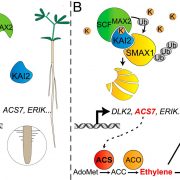
The karrikin signaling regulator SMAX1 controls Lotus japonicus root and root hair development by suppressing ethylene biosynthesis (Proc. Natl. Acad. Sci. USA)
Plant Science Research Weekly
KARRIKIN INSENSITIVE 2 (KAI2) and MORE AXILLARY GROWTH 2 (MAX2) form an important hormone receptor complex and mediate several developmental responses in the karrikin signaling pathway. The proteolytic degradation of the suppressor of MAX2 (SMAX1) is a major step in this pathway. Carbonnel et al.…
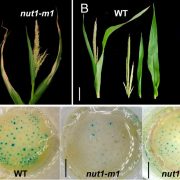
A protoxylem-specific NAC transcription factor modulates heat and drought stress in maize (PNAS)
Plant Science Research Weekly
Excessive heat and water deficit coincide with flowering and result in developmental defeats such as male floral organs browning, infertile pollen, and failure in fertilization: a syndrome known as “tassel blasting” in maize. The genetic pathway underlying tassel blasting is not well characterized.…
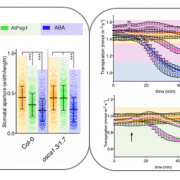
The calcium-permeable channel OSCA1.3 regulates plant stomatal immunity (Nature)
Plant Science Research Weekly
In plants, the perception of environmental threats induces a peak of calcium ions (Ca2+) in the cytosol that triggers signal transduction pathways leading to stomatal closure as defense response. In Arabidopsis, the mechanosensitive Ca2+ channel OSCA1 regulates water transpiration in response to…
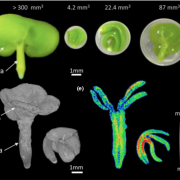
The process of seed maturation is influenced by mechanical constraints (New Phytol.)
Plant Science Research WeeklyDeveloping organs need to sense their surroundings to modulate their growth. In the case of embryos, their development is physically limited by the embryo sac; thus, they must assess the space they have available for growing and modulate their growth accordingly. In this paper, Rolletschek et al. report…
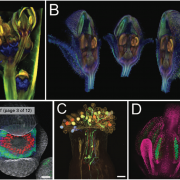
Plant Science Research Weekly: September 4, 2020
WWR Full PostReview. Imaging flowers: a guide to current microscopy and tomography techniques to study flower development
Flowers bear the reproductive organs and determine the reproductive success of plants by producing fruits and seeds. Flowers usually include four whorls of organs: sepals, petals, stamen…
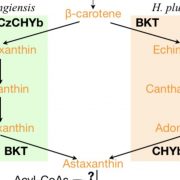
An Alternative Route for Astaxanthin Biosynthesis in Green Algae
Blog, Plant Physiology, Plant Physiology: News and Views, ResearchTianhu Sun
ORCID ID: 0000-0002-2513-1387
Plant Breeding and Genetics Section, School of Integrative Plant Science, Cornell University, Ithaca, New York 14853
[email protected]
Astaxanthin is the reddish carotenoid pigment that gives color to shrimp, salmon, and flamingo. However, these animals…

Recognizing Plant Physiology authors: Jin Hoon Jang
Plant Physiology, Plant Physiology: Author ProfilesJin Hoon Jang, first author of Phospholipase pPLAIIIα increases germination rate and resistance to turnip crinkle virus when overexpressed
Current Position: Ph.D candidate (2019.03~ present), Chonnam National University, Gwangju, Republic of Korea, Supervisor: Ok Ran Lee
Education: Ph.D. in Applied…

Recognizing Plant Cell authors: Viktoriya Coneva
The Plant Cell, The Plant Cell: Author ProfilesViktoriya Coneva, co-first author of Sterile spikelets contribute to yield in sorghum and related grasses
Current Position: Molecular Biology Scientist at CTC Genomics, St. Louis
Education: PhD University of Guelph, Guelph, ON, Canada
Non-scientific Interests: day hikes, photography, puns
Brief…

Recognizing Plant Cell authors: Taylor AuBuchon-Elder
The Plant Cell, The Plant Cell: Author ProfilesTaylor AuBuchon-Elder, co-first author of Sterile spikelets contribute to yield in sorghum and related grasses
Current Position: Senior lab technician
Education: B.A. Biological Sciences Webster University, St. Louis, Missouri
Non-scientific interests: cooking, gardening, traveling, activism,…

